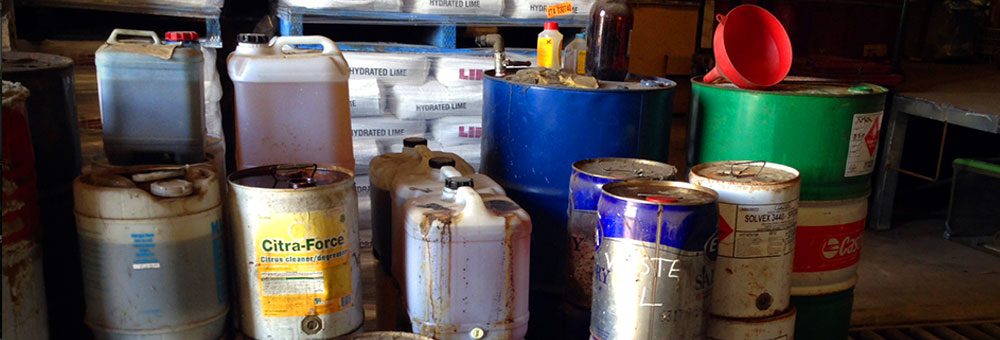Safe and Lasting Liquid Waste Disposal: Your Go-To Provider
Safe and Lasting Liquid Waste Disposal: Your Go-To Provider
Blog Article
Just How Fluid Waste Disposal Works: An In-depth Overview of Techniques and Technologies Utilized

Summary of Fluid Waste Types
The intricacy of liquid waste kinds requires an extensive understanding of their characteristics and implications for disposal. Liquid waste can extensively be classified right into several kinds, including commercial, municipal, agricultural, and hazardous waste. Each group shows distinct homes, needing details monitoring strategies to mitigate environmental and wellness risks.
Industrial liquid waste stems from making processes and frequently consists of a series of contaminants, such as heavy metals, solvents, and organic substances. Municipal liquid waste, mainly comprising wastewater from families and commercial establishments, includes raw material, nutrients, and virus (industrial wastewater treatment). Agricultural fluid waste, including runoff from ranches, may include fertilizers, pesticides, and animal waste, posturing threats to water top quality and communities
Harmful liquid waste is identified by its poisoning, sensitivity, or possible to trigger harm. Comprehending these varied liquid waste types is essential for creating reliable disposal techniques and guaranteeing compliance with ecological policies.
Physical Therapy Approaches

Testing is the preliminary step, where bigger bits and debris are eliminated from the liquid waste using displays or grates. In sedimentation tanks, larger bits resolve at the base, developing a sludge layer, while the clarified liquid can be more treated.
Filtering is one more essential technique that entails passing the fluid with permeable products, such as sand or membrane layers, to record smaller sized fragments. This action boosts the top quality of the fluid, making it appropriate for subsequent therapy processes.

Chemical Therapy Methods
Chemical treatment strategies are important for efficiently managing fluid waste, specifically in addressing liquified and colloidal contaminants that physical techniques might not properly eliminate. These methods make use of various chemical representatives to counteract, speed up, or change harmful compounds into much less damaging types.
One usual method is coagulation and flocculation, where chemicals such as alum or ferric chloride are contributed to promote the aggregation of put on hold bits. This process boosts sedimentation, permitting simpler removal of the resulting sludge. Additionally, oxidation processes, using representatives like chlorine or ozone, are employed to damage down complex natural substances and virus, making the waste safer for discharge or more treatment.
Neutralization is another important strategy, which readjusts the pH of acidic or alkaline waste streams to neutral levels, stopping possible injury to downstream systems and the setting. Additionally, advanced oxidation processes (AOPs) make use of combinations of oxidants and ultraviolet light to break down consistent toxins, achieving a higher level of therapy effectiveness.
Organic Treatment Procedures
Biological treatment procedures play a vital duty in the administration of liquid waste by utilizing bacteria to decompose natural issue and lower pollutant levels. These processes can be generally classified into cardiovascular and anaerobic treatments, each using details microbial areas to accomplish effective waste destruction.
Cardio therapy involves using oxygen to facilitate the failure of organic materials by bacteria. This procedure is frequently carried out in triggered sludge systems, where aeration tanks give a helpful environment for microbial growth, leading to the oxidation of organic toxins. The resultant biomass can be separated from treated effluent via sedimentation.
On the other hand, anaerobic treatment occurs in the absence of oxygen, counting on different microorganisms to damage down natural matter. This approach is especially useful for high-strength waste, as it generates biogas, a renewable resource resource, while reducing sludge manufacturing. Technologies such as anaerobic digesters are frequently utilized in metropolitan and commercial applications.
Both anaerobic and cardiovascular organic therapies not only lessen the environmental influence of liquid waste however likewise promote resource recovery, making them necessary parts of sustainable waste monitoring techniques. Their efficiency, versatility, and effectiveness sustain their widespread application across various sectors.
Arising Technologies in Disposal
Cutting-edge approaches to fluid waste disposal view are rapidly evolving, driven by developments in modern technology and an increasing emphasis on sustainability. Among these emerging modern technologies, membrane layer bioreactors (MBRs) have gotten grip for their capability to integrate organic treatment with membrane layer filtration, leading to high-quality effluent that can be reused in different applications. MBRs make it possible for smaller sized impacts and much more efficient procedures compared to conventional systems.
An additional encouraging development is using anaerobic food digestion integrated with nutrient recovery technologies, which not only deals with liquid waste however also creates biogas and recoups useful nutrients like nitrogen and phosphorus. This dual benefit improves resource efficiency and decreases environmental effect.
Furthermore, progressed oxidation processes (AOPs) are being taken on for the deterioration of complicated natural contaminants. These techniques use effective oxidants and drivers to break down pollutants at the molecular level, supplying a highly effective service for difficult waste streams.
Additionally, the integration of expert system and device discovering in waste administration systems is optimizing operational efficiency and predictive upkeep, bring about minimized costs and boosted environmental compliance. These technologies reflect a substantial shift towards even more reliable and lasting liquid garbage disposal practices.
Conclusion
In verdict, reliable fluid waste disposal necessitates a detailed understanding of different methods and modern technologies. By continuously advancing these techniques, it ends up being feasible to deal with the growing challenges connected with fluid waste, inevitably contributing to environmental protection and resource recuperation.
Fluid waste disposal is an important aspect of ecological management, calling for a detailed understanding of different strategies and innovations customized to various waste kinds. Fluid waste can generally be classified right into a number of types, consisting of commercial, municipal, special info farming, and unsafe waste. Agricultural fluid waste, Recommended Reading including drainage from farms, might include plant foods, pesticides, and animal waste, posturing threats to water high quality and communities.
Numerous physical treatment approaches play a crucial function in managing fluid waste successfully - industrial wastewater treatment.In conclusion, efficient liquid waste disposal requires a comprehensive understanding of different techniques and technologies
Report this page